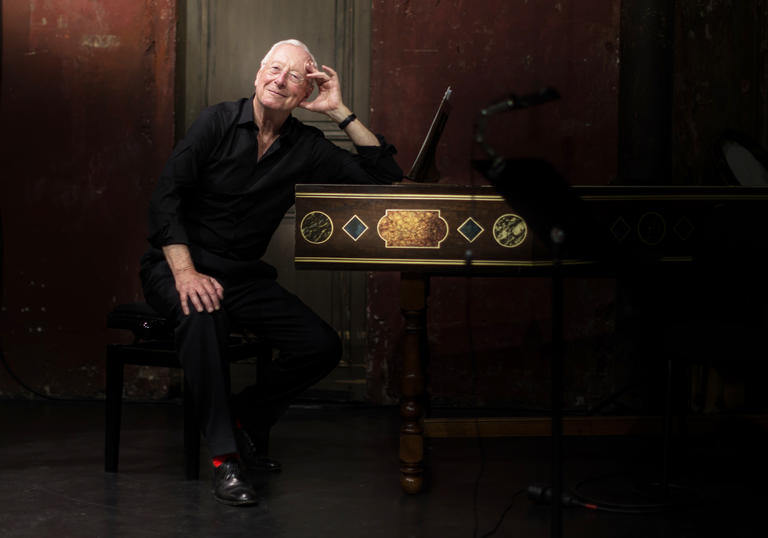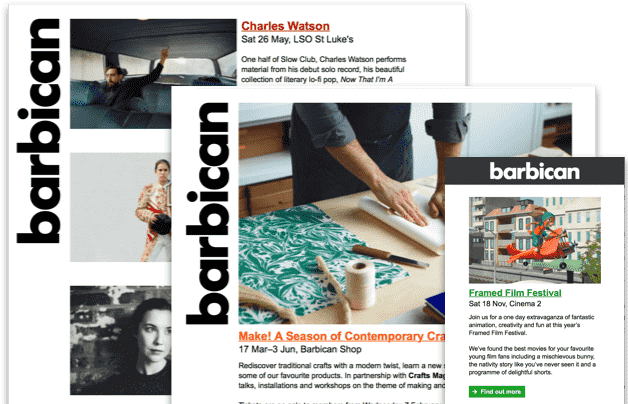
Programme and performers
Marc-Antoine Charpentier Antiennes ‘O’ de l’Avent, H36–43
and Noëls pour les instruments, H531 and 534
Noël ‘Laissez paître vos bêtes’
Salut: O salutaris hostia
Noël ‘O créateur’
Premier O: O Sapientia
Deuxième O: O Adonai
Noël ‘Vous qui désirez sans fin’
Troisième O: O radix Jesse
Noël ‘Les bourgeois de Châtre’
Quatrième O: O clavis David
Noël ‘Où s’en vont ces gais bergers’
Cinquième O: O Oriens splendor
Noël ‘Joseph est bien marié’
Sixième O : O rex gentium
Noël ‘Or nous dites Marie’
Septième O : O Emmanuel
Sur la Naissance de Notre Seigneur Jésus-Christ,
H482
1. Overture
2. Scene 1
3. Scene 2
In nativitatem Domini Canticum, H416
1. Prelude
2. Chorus of the Just
3. Night
4. The Shepherds’ Awakening
5. Shepherds’ Chorus
6. The Angel
7. Chorus of Angels
8. The Shepherd
9. The Shepherds’ Journey
10. Chorus
11. Final Chorus
Les Arts Florissants
William Christie conductor
Emmanuelle de Negri soprano
Julie Roset soprano
Nicholas Scott high tenor
Bastien Rimondi tenor
Lisandro Abadie bass-baritone
Translations
O salutaris:
O salutaris hostia quae caeli pandis ostium
bella premunt hostilia da robur fer auxilium.
Premier O: O Sapientia
O Sapientia quae ex ore altíssimi prodiísti
attíngens a fine usque ad finem fortiter
suaviterque disponens omnia veni ad
docendum nos viam prudentiae.
Deuxième O: O Adonai
O Adonai et dux domus Israel qui Moysi in
igne flammae rubi apparuisti et ei in sina
legem dedisti veni ad redimendum nos in
brachio extento.
Troisième O: O radix Jesse
O radix Jesse, qui stas in signum populorum
super quem continebunt reges os suum quem
gentes deprecabuntur veni ad liberandum nos
jam noli tardare.
Quatrième O: O clavis David
O clavis David, et sceptrum domus Israel;
qui aperis, et nemo claudit ; claudis, et
nemo aperit : veni, et educ vinctum de domo
carceris, sedentem in tenebris, et umbra mortis.
Cinquième O: O Oriens splendor
O Oriens, splendor lucis aeternae, et sol
justitiae : veni, et illumina sedentes in tenebris,
et umbra mortis.
Sixième O: O rex gentium
O rex gentium, et desideratus earum, lapisque
angularis, qui facis utraque unum : veni, et
salva hominem, quem de limo formasti.
Septième O: O Emmanuel
O Emmanuel, Rex et legifer noster, expectatio
gentium, et salvator earum : veni ad
salvandum nos, Domine, Deus noster.
O salutary host
O salutary Host, who opens the gates of
Heaven, our foes afflict us with war, give us strength and help.
O Wisdom
O Wisdom, proceeding from the mouth of the
Most High, stretching from end to end,
disposing all things in strength and sweetness:
come and teach us the way of understanding.
O Adonai
O Adonai, Lord of the house of Israel, who
appeared to Moses in the fire of the burning
bush, and gave him the Laws on Mount Sinai:
come and deliver us with your strong arm.
O root of the tree of Jesse
O root of the tree of Jesse, who stands as a
sign to the nations, before whom Kings are
silent, and whom the nations implore : come
and deliver us, do not tarry.
O key of David
O key of David, sceptre of the house of Israel,
who opens and no one can close: come and
break the bonds of those who lie captive in
darkness and in the shadow of death.
O Star of the Morning
O Star of the Morning, splendour of eternal
light, and sun of righteousness : come and
shine upon those who sit in darkness and in the shadow of death.
O King of all nations
O King of all nations, their desire and the
keystone that holds everything together:
come and redeem mankind whom you fashioned out of clay.
O Emannuel
O Emmanuel, our King and Legislator, Hope
and Saviour of nations : come and save us,
Lord our God.
Translation © Harmonia Mundi, reprinted with kind permission
Artist biographies
Les Arts Florissants is a renowned ensemble of singers and instrumentalists specialising in the performance of Baroque music on period instruments. It was founded in 1979 by the Franco-American harpsichordist and conductor William Christie and has played a pioneering role in the revival of a Baroque repertoire that had long been neglected. Today that repertoire is widely performed and admired: not only French music from the reign of Louis XIV, but also more generally European music of the 17th and 18th centuries. Since 2007, the ensemble has also been conducted by the British tenor Paul Agnew, who was appointed Musical Co-director in 2019.
Each season Les Arts Florissants gives around 100 concerts and opera performances in France – at the Philharmonie de Paris, where it is Artist-in-Residence, the Théâtre de Caen, Opéra Comique, Théâtre des Champs-Élysées, Château de Versailles, as well as at numerous festivals – and as an ambassador for French culture abroad, being regularly invited to New York, London, Edinburgh, Brussels, Vienna, Salzburg, Madrid, Barcelona, Moscow, and elsewhere.
Since the 1987 production of Lully’s Atys at the Opéra Comique, it has been on the opera stage that Les Arts Florissants has enjoyed its greatest successes. Notable productions include works by Rameau, Lully, Charpentier, Handel, Purcell, Mozart and Monteverdi, but also by composers who are less frequently played, such as Landi, Cesti, Campra and Hérold.
For its theatre productions, Les Arts Florissants has worked with leading stage directors and renowned choreographers.
Les Arts Florissants enjoys an equally high profile in the concert hall, as illustrated by its many acclaimed concert or semi-staged performances of operas and oratorios, its secular and sacred chamber-music programmes and its approach to large-scale works.
The ensemble has a discography of nearly 100 recordings on CD and DVD.
In recent years, Les Arts Florissants has launched several education programmes for young musicians. Central to these is the Academy of Le Jardin des Voix: created in 2002, it is held every two years and has already brought a substantial number of new singers into the limelight. The Arts Flo Juniors programme, launched in 2007, enables conservatory students to join the orchestra and chorus for the duration of a production; it also has a partnership with the Juilliard School, which since 2007 has allowed a fruitful artistic exchange between the US and France. Last year it launched an annual programme of masterclasses in Thiré (in the Vendée) led by William Christie and Paul Agnew to help young professionals improve their skills.
Les Arts Florissants also organises numerous events aimed at building new audiences.
In 2012, William Christie and Les Arts Florissants created the festival Dans les Jardins de William Christie, in partnership with the Conseil départemental de la Vendée. An annual event, the festival brings together artists from Les Arts Florissants, students from the Juilliard School and finalists from Le Jardin des Voix for concerts and promenades musicales in the gardens created by William Christie at Thiré. In addition to the festival, Les Arts Florissants is working towards the creation of a permanent cultural venue in Thiré. This aim was furthered in 2017 through the accolade of ‘Centre culturel de Rencontre’ for Les Arts Florissants and Les Jardins de William Christie – an award which distinguishes projects associating creation, heritage and dissemination. The following year saw the creation of the Les Arts Florissants–William Christie Foundation.
Les Arts Florissants receives financial support from the French state — the Regional Direction of Cultural Affairs (DRAC), the Département de la Vendée and the Région Pays de la Loire. The Selz Foundation is its Principal Sponsor. Aline Foriel-Destezet and the American Friends of Les Arts Florissants are Major Sponsors. Les Arts Florissants has been ensemble-in-residence at the Philharmonie de Paris and is recognised as a ‘Heritage Site for Culture’.
